I grew up like most kids in the 1980s, watching the Roadrunner foil Wile E. Coyotes plans. I was team Roadrunner all the way, I mean come on, to an Aussie kid Roadrunner looked like a big emu. I always had very little sympathy for the Coyote, as we all do for a predator. That all changed recently when the Roadrunner made a Wile E. Coyote out of me.
My very first encounter with a roadrunner in the United States was in Silver City, New Mexico. It was during the last week of 2015 when it ran past the window at my husband’s parents’ house. To my surprise, it looked nothing like the version of a roadrunner that Warner Bros had presented with me with. It also did not look anything like an emu, although it lived up to its name.
If I had to use one word to describe the roadrunner, I would have to say ‘zippy’. Just when you think you have it in your sights it zips off and it’s gone.
Every time the roadrunner would make an appearance I would grab my camera and head out to photograph it and it was gone. Unfortunately for me this happened a number of times. So I searched for the nest, waited patiently behind bushes, and still had no luck. I started sitting in the house near the windows with my camera next to me. This eventually paid off.
One morning I was finishing off my coffee and he appeared. He jumped up on a rock just outside the window and I was ready. I managed to capture a couple of photographs, although a plant kept getting in my way. I thought to myself ‘I am starting to feel like Wile E. Coyote, I can’t capture the Roadrunner’.
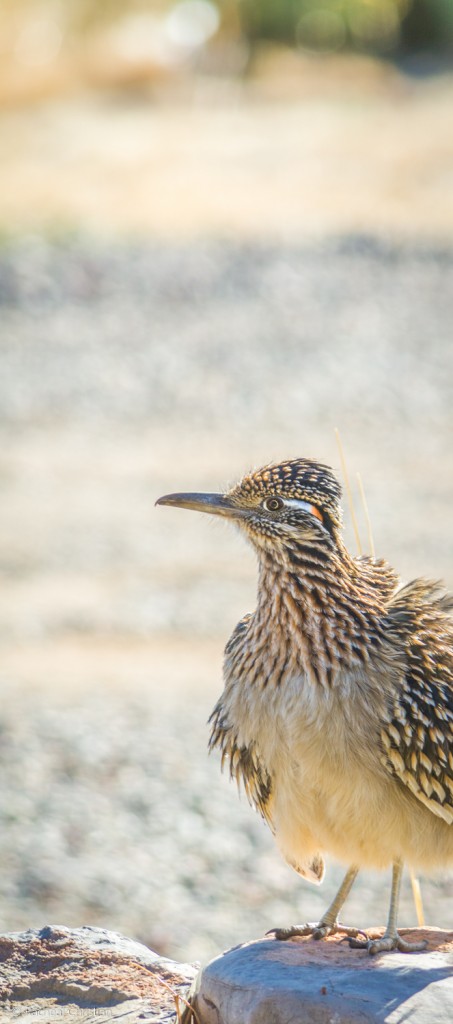
Taken through the window in Silver City, New Mexico
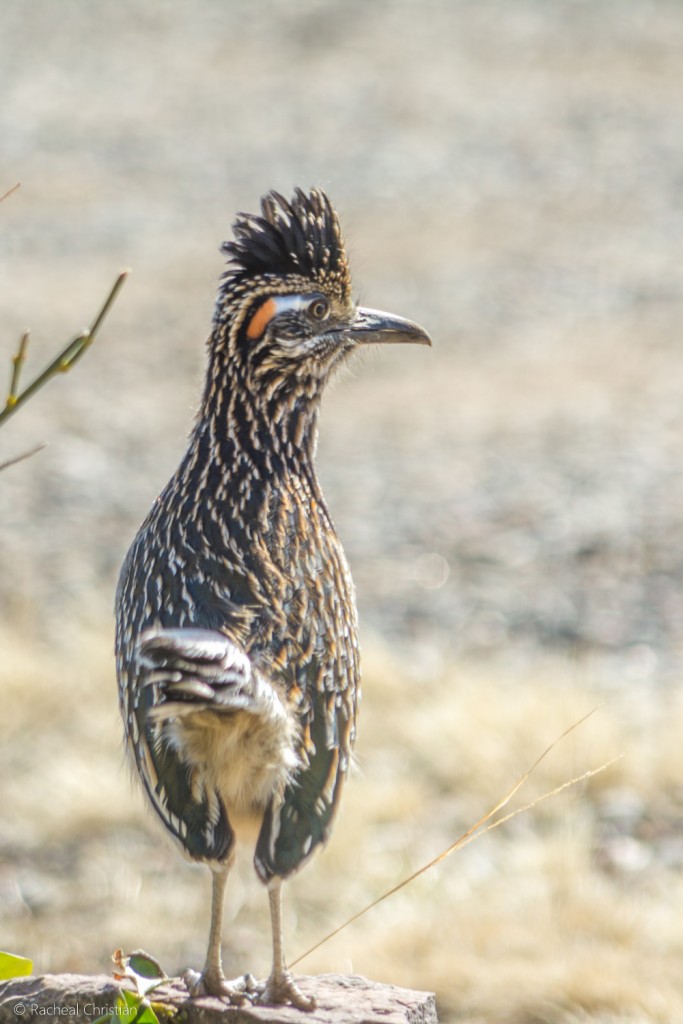
Another image was taken through the window in Silver City, New Mexico
A few weeks later my husband (James) and I saw something shoot across the road at an alarming speed. Lucky for me I had my camera on the back seat of the car. All I remember yelling was ‘stop, stop, stop stop’. I was elated to see it was a roadrunner. I had a second chance to get the shot I wanted and I did not want to mess it up by scaring it off. Therefore I took a couple of shots while I was next to the car and then motioned toward it.
I had just made it to the other side of the road and got in position when a car came roaring past. I took one look at the car and cringed. I then looked back to see the roadrunner and it was gone. I searched for a couple of minutes and could not find him again. I made my way back to the car vowing that someday I will capture a great shot of a roadrunner.
.
Some of the images taken from the side of the road in Las Cruces, New Mexico
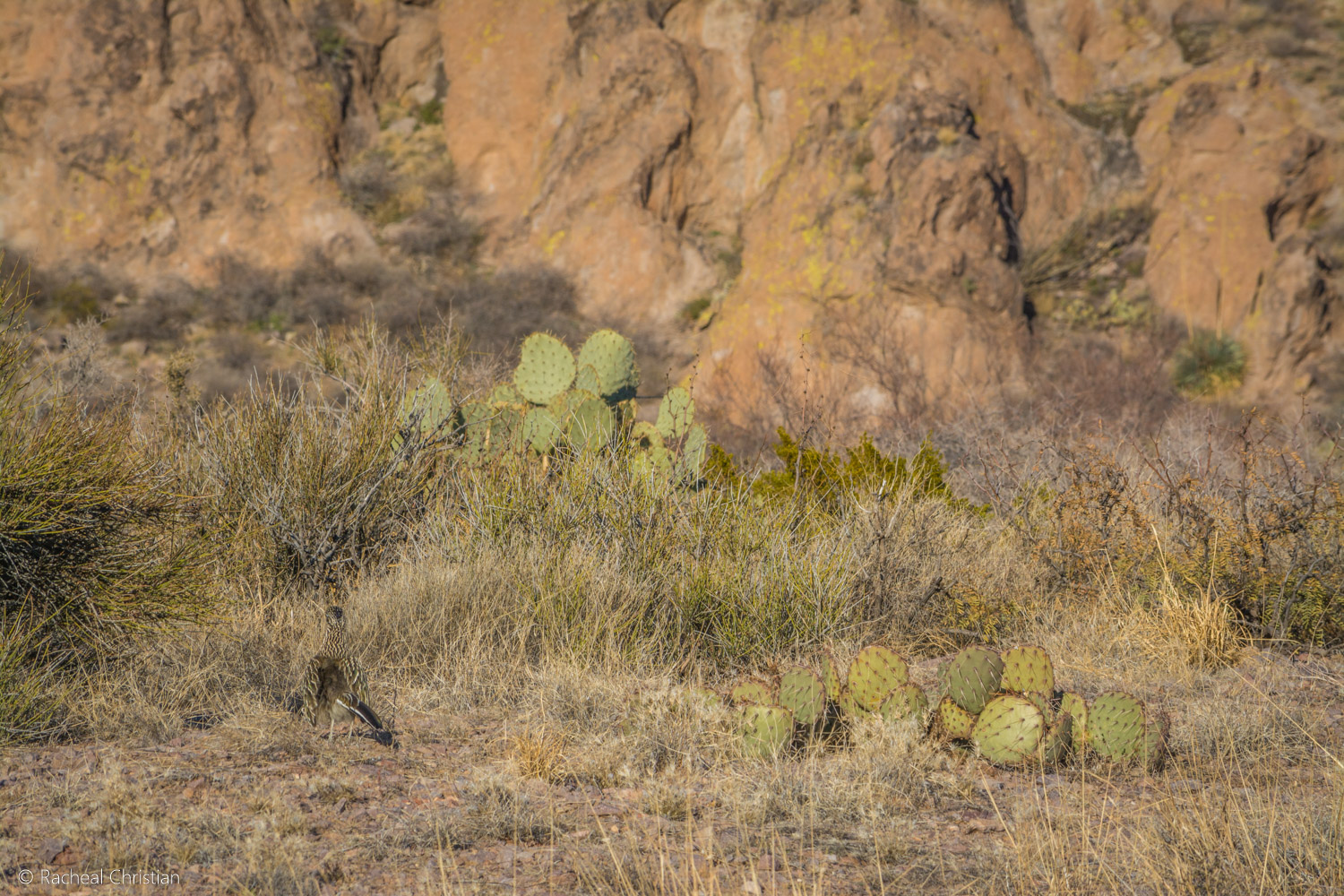
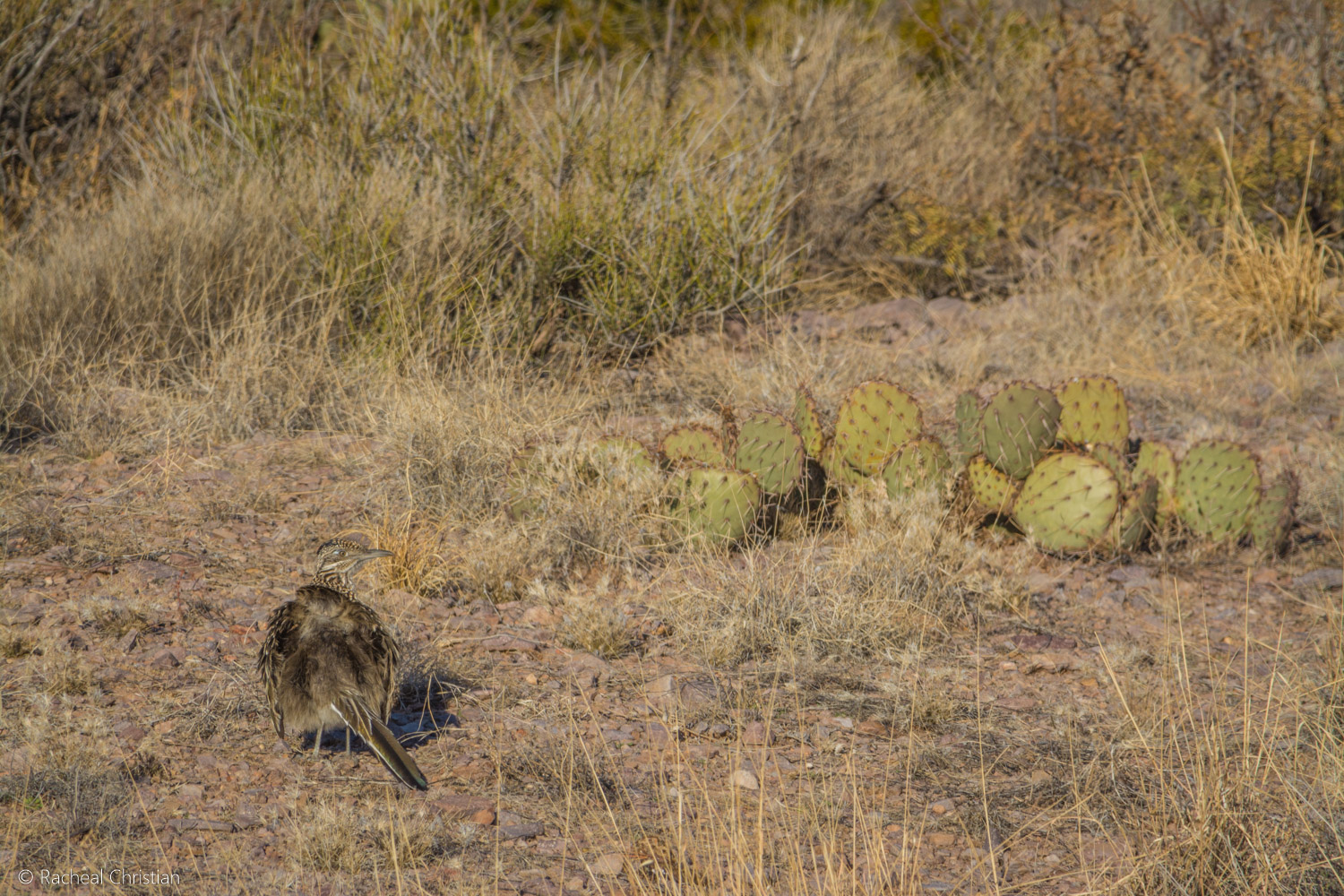
.
A Few Cool Things About The Roadrunner
.
- It is also known as a chaparral bird or chaparral cock.
. - While it is capable of flight, it spends most of its time on the ground.
- It and can run at speeds of up to 20 mph (32 km/h). There are cases where roadrunners have been reported running as fast as 26 mph (42 km/h). This is the fastest running speed clocked for a flying bird.
- During the courtship display the male bows, alternately lifting and dropping his wings and spreading his tail.
- It is a member of the cuckoo family and the genus Geococcyx, which only has two species: The roadrunner and the lesser roadrunner.
- The greater roadrunner, G. californianus, can be found in the southwestern United States and Mexico. Whereas the lesser roadrunner, G. velox, inhabits Mexico and Central America.
- It mainly lives off of other animals, including insects, lizards, scorpions, snakes, and even small birds. They do eat plants, including the fruits from a prickly pear cactus, when there are fewer animals around.
- They usually prey on small rattlesnakes and swallow them whole. Often the snakes are a little too big and the roadrunner will run around with part of it hanging out of its mouth, taking more in as it is digested.
- They have been known to snatch hummingbirds out of the air.
.
To view more of my bird images CLICK HERE
To purchase bird print products CLICK HERE


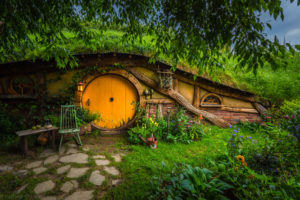









Leave a Reply
Your email is safe with us.